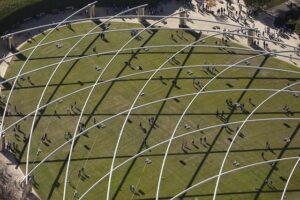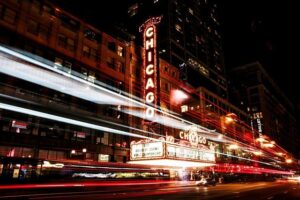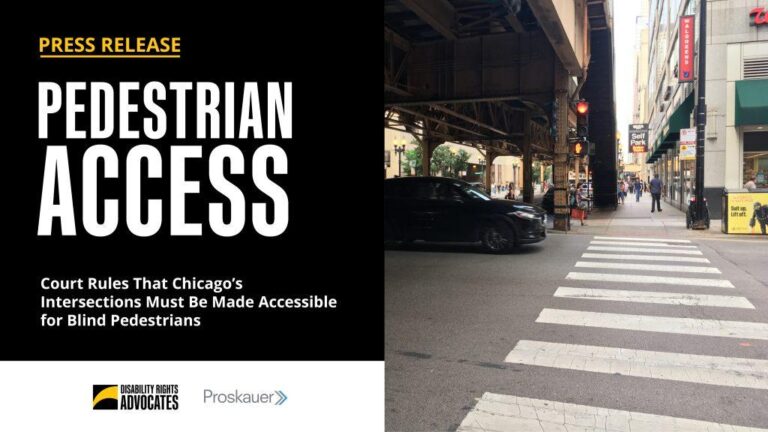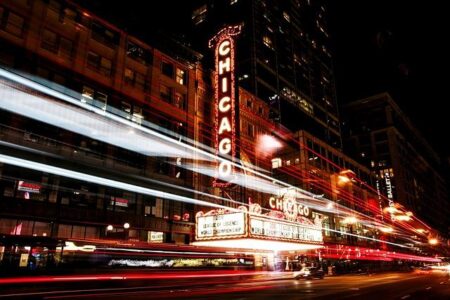Discovering Chicago: A Guide to Accessibility for the Visually Impaired
Immersive Cultural Experiences Tailored for the Visually Impaired
Chicago is steadily advancing as a city that embraces inclusivity, especially for visitors who are blind or have low vision. The city’s rich cultural institutions have adapted to offer multisensory experiences that engage more than just sight. For example,the Art Institute of Chicago now provides tactile tours where guests can explore select sculptures and textured artworks through touch,guided by knowledgeable staff. Meanwhile, the Chicago Botanic Garden invites visitors to experience nature’s beauty through fragrant plant displays and raised garden beds, creating an immersive environment that appeals to the senses of smell and touch.
Architecture enthusiasts can benefit from the Chicago Architecture Center, which offers detailed audio narrations and 3D tactile models that bring the city’s iconic skyline to life. Outdoor spaces like the Chicago Riverwalk feature smooth, accessible pathways and audible wayfinding systems, making navigation easier and more enjoyable. Here’s a snapshot of some standout accessible attractions:
- Art Institute of Chicago: Tactile tours and braille exhibit labels.
- Chicago Botanic Garden: Raised beds and aromatic plant stations.
- Chicago Architecture Center: Audio guides and 3D tactile models.
- Chicago Riverwalk: Audible navigation aids and accessible paths.
Mastering Chicago’s Urban Landscape: Expert Navigation Tips
For visually impaired visitors, maneuvering through Chicago’s lively streets can be both exciting and daunting. Fortunately, the city’s infrastructure incorporates numerous accessibility features designed to foster independence. Audible traffic signals, tactile paving at intersections, and bus stops equipped with voice announcements are just a few examples of how Chicago supports safe and confident travel.
Combining technology with community resources is highly recommended. Apps like Nearby Explorer and Seeing Assistant provide real-time navigation assistance tailored for the visually impaired. Additionally, organizations such as the Chicago Lighthouse offer orientation and mobility training, helping visitors familiarize themselves with the city’s layout.Consider these practical strategies when exploring different neighborhoods:
- Use CTA’s ADA-compliant buses and trains featuring audio alerts for stops.
- Download and utilize specialized navigation apps designed for accessibility.
- Consult tactile maps available at museums and cultural centers.
- Join guided tours organized by local groups focused on visually impaired travelers.
Accessible Dining: Savoring Chicago’s Culinary Delights
Chicago’s food scene is evolving to become more inclusive, ensuring that diners with visual impairments can enjoy meals with ease and confidence. Restaurants in popular districts like the West Loop and River North now offer braille and large-print menus, alongside staff trained to provide vivid verbal descriptions of dishes.These efforts transform dining into a fully sensory experience, where guests can appreciate flavors, aromas, and textures without barriers.
Key accessibility features found in these establishments include:
- Menus available in braille and large print formats.
- Staff skilled in guiding guests and narrating menu options.
- Seating arrangements designed for easy movement and comfort.
- Clear audio cues and attentive communication during ordering.
By integrating these thoughtful accommodations, Chicago’s restaurants celebrate diversity and ensure that every meal is a memorable sensory journey.
Engaging Outdoor Spaces: Sensory-Rich Environments for Exploration
Chicago’s outdoor areas are thoughtfully designed to stimulate senses beyond vision, offering unique opportunities for tactile and auditory engagement. The Accessible Garden Walkways feature textured paths that guide visitors through fragrant flower beds and raised borders, fostering a direct connection with nature. Nearby, the Soundscape Sculpture Park captivates visitors with interactive installations that produce melodic chimes and resonant sounds, which change with the seasons and weather conditions.
Public plazas also incorporate accessibility innovations such as Braille-embedded informational plaques and varied ground textures to aid navigation. Inclusive playgrounds equipped with raised sandboxes and bubble machines provide tactile play experiences designed specifically for children with visual impairments. Below is a summary of these sensory-focused outdoor destinations:
| Location | Distinctive Feature | Sensory Focus |
|---|---|---|
| Accessible Garden Walkways | Textured navigation paths | Fragrant plants and raised garden beds |
| Soundscape Sculpture Park | Interactive sound installations | Seasonal wind chimes and resonant tones |
| Inclusive Playground | Raised sandboxes and bubble machines | Tactile play elements |
Final Thoughts: Chicago’s Commitment to Accessibility
As Chicago continues to enhance its accessibility initiatives, the city is setting a high standard for inclusive travel experiences. From tactile art exhibits and audio-guided tours to accessible public transit and welcoming dining venues, Chicago ensures that visitors with visual impairments can fully immerse themselves in its cultural richness and urban vibrancy. This evolving landscape demonstrates that accessibility and excitement can coexist, making Chicago a top destination for travelers seeking both adventure and inclusivity.








